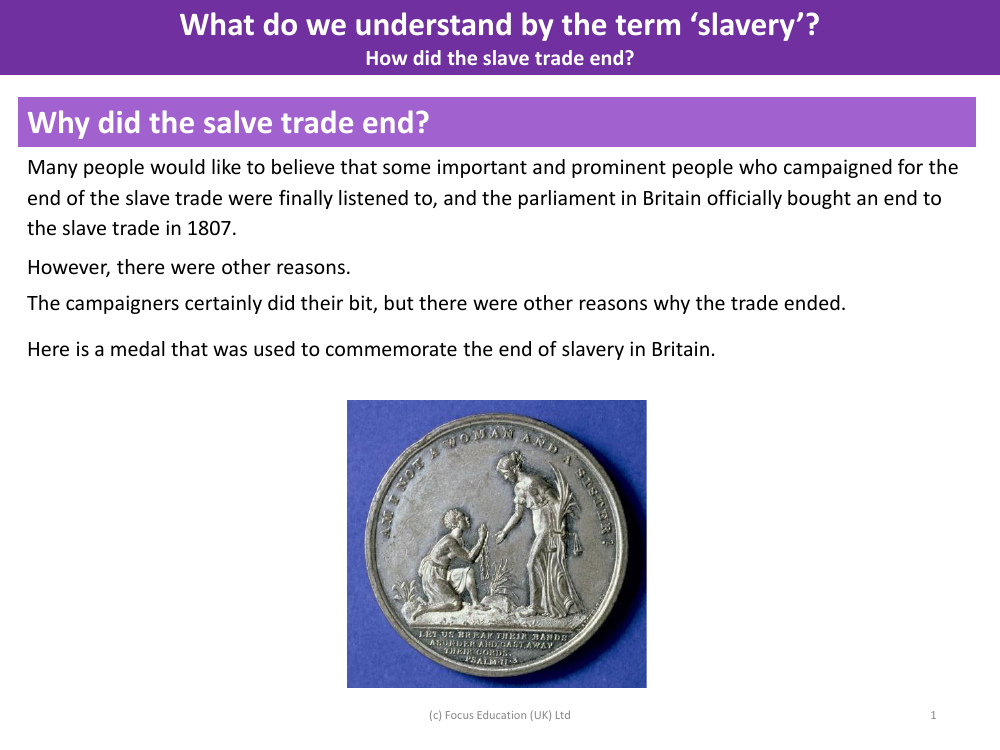How did the slave trade end? - Info Packs - Slavery - Year 5

History Resource Description
The termination of the slave trade is often attributed to the efforts of notable campaigners who ardently fought for its abolition, leading to the British Parliament enacting legislation in 1807 to officially end the trade. These individuals played a significant role in bringing about this historical change. However, it is important to recognise that there were additional factors that contributed to the cessation of the slave trade. Economic shifts played a crucial role; the profitability of the slave trade and the plantations that relied on slave labour began to decline. Consequently, the ships that were previously used to transport enslaved individuals were repurposed for more lucrative cargo. Additionally, the emergence of wage labour proved to be more economically viable than slave labour, further influencing the decision to bring the slave trade to an end.
Understanding the term 'slavery' is fundamental to comprehending the magnitude of the slave trade and its eventual conclusion. Slavery refers to the condition in which individuals are owned by others, who control where they live and at what they work. It is a system where people are treated as property and forced to work without pay, often under the threat of violence. The end of the slave trade marked a significant milestone in the fight against such human rights abuses, and it was commemorated with medals and other memorabilia celebrating this pivotal moment in history. The combined impact of social reform, economic changes, and evolving labour models ultimately led to the abolition of the slave trade, although the broader institution of slavery would persist until later dates in different parts of the world.




